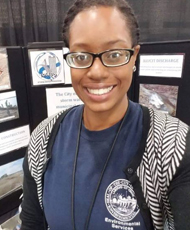Habitat Restoration in Great Lakes Areas of Concern: Maumee River
NOAA-GLC Regional Habitat Restoration Partnership
About Maumee River Habitat Restoration
The Great Lakes Commission (GLC) and the National Oceanic and Atmospheric Administration (NOAA) are leading efforts to restore several critical Great Lakes Areas of Concerns (AOCs)— the worst “toxic hotspots” in the region. In 1987, the Maumee was designated an AOC due to environmental degradation and pollution. Funding from the Great Lakes Restoration Initiative (GLRI) was distributed by the Environmental Protection Agency to a Regional Partnership between NOAA and GLC and was allocated toward the restoration of the Maumee River. The engineering & design and implementation phases of a full-site restoration at the Penn 7 project site were completed in early 2023. Current projects include the Collins Park Golf Course stream restoration engineering and design, stream and wetland restoration at the Ottawa River at Jermain Park engineering & design, and Swan Creek restoration engineering & design at the University of Toledo Medical Center.
More about Maumee River Restoration
Located in northwest Ohio, the Maumee Area of Concern (AOC) is comprised of 787 square miles that includes the lower 23 miles of the Maumee River downstream to Maumee Bay, as well as other waterways within Lucas, Ottawa and Wood counties that drain to Lake Erie, such as Swan Creek, Ottawa River (Ten Mile Creek), Grassy Creek, Duck Creek, Otter Creek, Cedar Creek, Crane Creek, Turtle Creek, Packer Creek, and the Toussaint River. In 1987, the Maumee AOC was designated under the Great Lakes Water Quality Agreement. Since then the Maumee AOC has been on a continual journey of evolution. The Maumee AOC program has evolved through many phases and with that evolution comes many changes; in structure, in process, in name, and in the terminology used.
The Maumee AOC Advisory Committee (MAAC) is currently a stand-alone committee that is still the heart of the process. The Maumee AOC is still a collaborative, locally based group of dedicated people working through the state and federal AOC program to restore fishable and swimmable waters. This local AOC committee continues to liaison with Ohio EPA and U.S. EPA, while both agencies work closely with the Canadian counterparts through the Great Lakes Water Quality Protocol of 2012 to address key environmental health issues that are severely impacted in areas of concern around the Great Lakes. The Maumee AOC has 9 of the 14 Beneficial Use Impairments (BUIs) remaining. One BUI was removed in 2015.
In 2015, the City of Toledo implemented a $175,000 Great Lakes Restoration Initiative Grant awarded by NOAA to assess the feasibility of restoration work on a former Confined Disposal Facility (Penn 7) on the northern shoreline of the Maumee River. The 2016 NOAA-GLC Partnership funded the engineering and design phase of this restoration project. The 2019 NOAA-GLC Partnership provided additional funding for the implementation phase which created ideal fish nursery habitat as well as emergent and submergent wetlands used by a variety of wildlife species. Final implementation addressed the AOC’s BUI 14: Loss of Fish and Wildlife Habitat and BUI 3: Degradation of Fish and Wildlife Populations. Restoration activities have resulted in the creation of 8.5 acres of emergent coastal wetland and 6.7 acres of submerged coastal wetland.
The restoration of the Ottawa River in Jermain Park project is being funded by the 2019 NOAA-GLC Partnership. This project includes engineering & design and full implementation which will enhance 2.7 acres of wetland with diverse plantings, stabilize 2,300 feet of eroding streambank, and enhance 750 feet of riparian buffer. The specific BUIs being addressed by this project include BUI 3a-Degradation of Fish Populations, BUI 6-Degradation of Benthos, and BUI 14a-Loss of fish habitat.
The Collins Park Stream Restoration Feasibility Study is also being funded by the 2019 NOAA-GLC Partnership. This project will evaluate and plan for the restoration of a degraded watercourse and wetland habitat areas on a portion of Duck Creek within the boundaries of a municipal golf course in the City of Toledo. The information produced will inform final plans, bid documents, and implementation directed at reducing downstream sedimentation and sludge, improving biodiversity of native species, introducing nursery habitat, cover, and forage for fish, amphibians, reptiles, waterfowl, and macroinvertebrates. Eventual implementation of this project will address objectives laid out by the Maumee AOC Program to achieve Ohio’s beneficial use restoration targets and provide connectivity between other AOC habitat improvement projects.
A new project, funded by the 2023 NOAA-GLC Partnership, is the University of Toledo Medical Center Swan Creek Engineering & Design Restoration project. This project will build on a concept design previously created during a feasibility study conducted in 2017. The engineering and design phase of the project will result in construction design for the stabilization of approximately 1,700 feet of eroding streambank and the installation of approximately 50 linear feet of riffle habitat.
Benefits of Restoration
Environmental Benefits:
- Create 8.5 acres of emergent coastal wetland and 6.7 acres of submerged coastal wetland
- Improve roughly 59 acres of habitat including adjacent upland areas
- Control invasive plant species and plant natural vegetation
- Install water control and fish habitat connectivity structures
- Enhance fish and wildlife habitat
- Restore Fish habitat connectivity with Maumee River
Community Benefits:
- Creation of a downtown nature space
- Improve water quality and ecosystem health
Economic Benefits:
- Regional benefits to eco-tourism, birding, and fishing
The fact sheets and documents listed below provide additional information about the Maumee River projects.
Documents and Fact Sheets
The following fact sheets and documents provide additional information about the Maumee River project and specific elements of the project.
News Coverage
Penn 7 Media Coverage
- Completion of the Penn 7 restoration project celebrated with ribbon cutting | June 2022
- Another piece in the Maumee AOC puzzle is completed | June 2022
- North Toledo residents weigh in on Penn 7 property restoration plans | November 2019
Collins Park Media Coverage
Jermain Park Media Coverage
- Project will restore vital wetlands along the Ottawa River | April 2023
- Restoring the Ottawa River in Jermain Park | April 2023
Funding
Approximately $3.8 million has been awarded to these projects by the Great Lakes Restoration Initiative (GLRI) from both the U.S. Environmental Protection Agency and the National Oceanic and Atmospheric Administration and Great Lakes Commission Regional Partnership. The GLRI is a federal program designed to protect and restore the largest system of fresh surface water in the world — the Great Lakes.
For More Information

Jill Estrada
Coastal Conservation and Habitat Restoration
Project Manager, Great Lakes Commission
734‐396‐6059 • [email protected]

Karen Ranney Wolkins
Commissioner, City of Toledo Division of Parks, Recreation and Forestry
Penn 7 Restoration Project
419-245-3357
[email protected]

LaShawna Weeks
Senior Environmental Specialist, City of Toledo
Jermain Park Restoration Project
Office: (419) 936-3777
[email protected]

Edith Kippenhan
Stormwater Coordinator, City of Toledo Division of Environmental Services
Collins Park Restoration Project
419-936-3764
[email protected]
Sign up for our e-newsletter
Get the latest Great Lakes Commission news and events in your inbox!
Sign up for our e-newsletter
Get the latest Great Lakes Commission news and events in your inbox!
